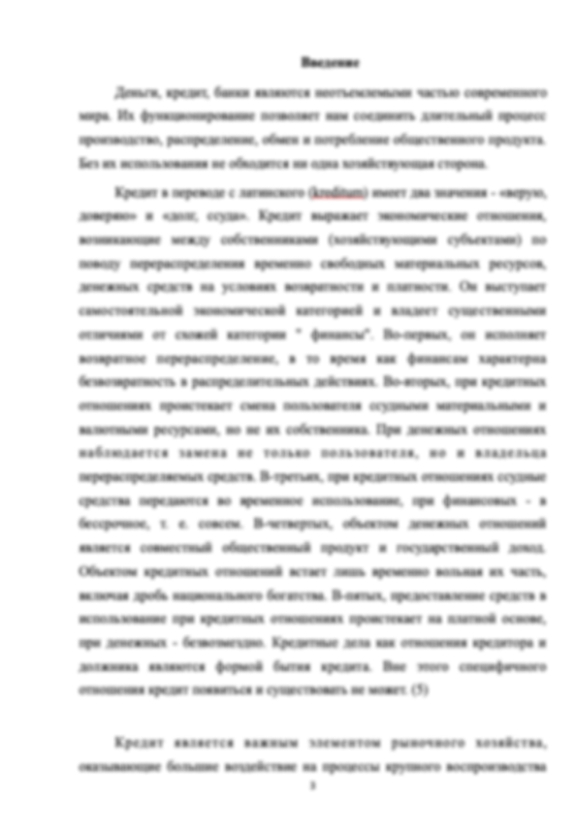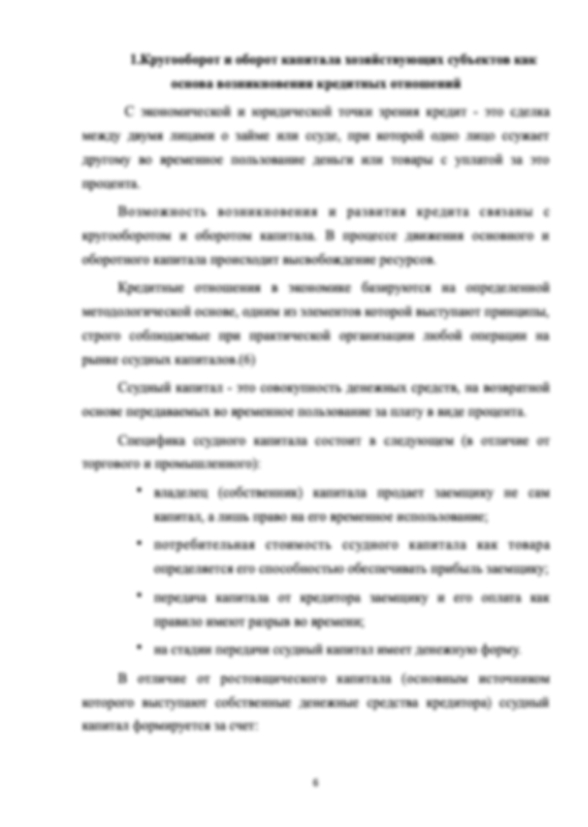все хорошо!
Информация о работе
Подробнее о работе

КОНТРОЛЬНАЯ РАБОТА № 1 по иностранному языку (английский язык) ВАРИАНТ 1 (А-З) 2 семестр
- 13 страниц
- 2023 год
- 1 просмотр
- 0 покупок
Гарантия сервиса Автор24
Уникальность не ниже 50%
Фрагменты работ
ВВЕДЕНИЕ
Заочная форма обучения иностранному языку предусматривает главным об-разом самостоятельную работу студентов. Групповые занятия проводятся препо-давателями кафедры иностранных языков по графику заочного факультета.
Грамматический материал излагается в краткой и доступной форме. Для бо-лее детального изучения грамматических разделов, необходимых для успешного выполнения контрольной работы, студенту помогут учебно-методические ком-плексы по изучению грамматики английского языка для студентов заочной формы обучения (Темы 1-6), которые ознакомят студентов с грамматическими формами и в которых приведены грамматические комментарии, позволяющие при необходи-мости самостоятельно изучить или повторить то или иное грамматическое прави-ло, и из практической части, представленной в виде коммуникативно-направленных упражнений, выполнение которых позволит студентам закрепить формируемые навыки чтения.
После проработки материала студенты заочного факультета выполняют кон-трольную работу 2, включающую в себя разделы: чтение, лексика, грамматика и говорение, работу с текстом. В контрольной работе 2 три варианта. Студенты вы-бирают нужный вариант по первой букве своей фамилии: А – З – первый вариант, И – С – второй, Т – Я – третий вариант.
2.1.3.Определите, являются ли утверждения, данные ниже, правдивыми – соответствуют тексту (True) или ложными – не соответствуют тексту (False).
1. A siding is a long track alongside a main or branch line to which one of two meeting trains is switched until the other train passes.
2. The cross-sectional area of a rail looks like letter "X" or letter "V".
3. Only trains carry heavier cargoes for longer distances.
4. Almost every country has at least one railroad.
5. Main-line routes link small cities; branch lines extend between main lines and various places not served by main lines.
6. The central government owns all or most of the railroad lines.
7. But railways do not own a certain amount of land on both sides of the road-way.
8. The web is the middle part between the head and the foot.
2.1.4. Ответьте письменно на вопросы по содержанию текста.
1. What kinds of loads do railroads carry?
2. Why are railroads considered the most important and universal mode of transport?
3. What is the longest railroad line in the world?
4. Who controls most railroad lines in many countries?
5. What are the basic elements of the track?
6. What building materials are used to make rails, crossties and ballast?
7. What parts do rails consist of?
8. What is the role of the fishplate?
9. What rails are called continuous welded rails?
10. What do they ensure?
2.2. Vocabulary
2.2.1. Замените подчеркнутые слова синонимами из текста.
1. Railroads are and have always been the most important mode of transport.
2. Some trains carry people; others transport various cargoes.
3. Almost every country has a railway.
4. The longest rail line extends for more than 9,000 km.
5. This railroad joins the capital of Russia and Vladivostok.
6. Most railroads all over the world are controlled by the state.
7. The railroad track consists of two parallel steel rails joined to timber or concrete sleepers.
8. Rails are made up of 3 parts: the lower part, the upper part and the middle part.
2.2.2. Найдите в тексте английские эквиваленты следующим выражениям.
- важный и наиболее универсальный вид транспорта
- скоростные пассажирские поезда
- управлять железными дорогами
- строительство, ремонт, эксплуатация
- возрастающая конкуренция
- двигаться одновременно в противоположных направлениях
- железнодорожные сооружения: мосты и тоннели
- высококачественная сталь для рельсов
2.3. Grammar
2.3.1. Выпишите из текста 2 предложения, в которых имена прилагатель-ные стоят в сравнительной степени, и 3 предложения, в которых имена прила-гательные стоят в превосходной степени сравнения. Переведите все предложе-ния на русский язык.
2.3.2. Выпишите из текста 4 предложения, выделенные курсивом, и пере-ведите на русский язык. Поставьте их во времена Past Simple Passive и Future Simple Passive.
Например:
Heavy cargoes are carried by ships. – Тяжелые грузы перевозятся кораблями.
1) Heavy cargoes were carried by ships.
2) Heavy cargoes will be carried by ships.
2.3.3. Замените предложения в действительном залоге (Active Voice) пред-ложениями в страдательном залоге (Passive Voice), используя выделенные курси-вом слова в качестве подлежащего.
Например:
Ships carry heavy cargoes.
Heavy cargoes are carried by ships.
1. The railroad engineers installed high-quality steel rails and concrete crossties on this line.
2. Railroad builders use steel fishplates to join rails end-to-end.
3. Workers weld together standard rails to make continuous welded rails.
4. Engineers used crushed stone and gravel to make good ballast.
5. Engineers employ special equipment to make the land for the roadbed smooth and level.
6. Railroad engineers planned the route for the future railroad line with the least possible grades and curves.
7. Steep grades limit both the speeds of trains and the loads carried.
8. Engineers often design railroad bridges and tunnels along the route.
2.3.4. Выберите из 5 подчеркнутых в тексте предложений только те, ко-торые соответствуют конструкции Perfect Tenses (Active Voice, Passive Voice). Выпишите их и переведите на русский язык.
2.3.5. Что происходит в данный момент. Напишите правдивые предложе-ния.
1) I / wash / my hair.
2) It / snow.
3) I / sit / on a chair.
4) I / eat.
5) It / rain.
6) I / learn English.
7) I / listen to music.
8) The sun / shine.
9) I / wear shoes.
10) I / read the newspaper.
2.3.6. Раскройте скобки и поставьте глагол в правильную форму the Past Continuous или the Past Simple.
1) When I … (come) home, my little sister … (sleep).
2) When I … (see) my friends yesterday morning, they … (play) football.
3) Tom … (slip) and … (fall) down when he … (cross) the road.
2.3.7 Раскройте скобки и поставьте глагол в правильную форму Present Simple, Present Continuous, Past Continuous или Past Simple.
1) A: Where … (be / you) yesterday?
B: I … (be) at home the whole day.
A: How strange. I … (ring) you up at 2 o'clock, but nobody … (answer).
B: Oh, I … (be) in the garden. I … (read) the book and … (not / hear) the phone. Was there anything urgent?
2) Listen! Somebody … (play) the piano.
3) I … (like) music very much.
2.3.8. Переведите предложения на английский язык, используя указанное время и залог.
Simple tenses (Present/Past/Future). Passive Voice.
1) Торт будет испечен шеф-поваром.
2) Эта книга была написана известным писателем.
3) Машина была отремонтирована профессиональным механиком.
4) В прошлом году концерт посетили тысячи поклонников.
5) Эту ошибку часто совершают студенты первого курса.
Continuous tenses (Present/Past/Future). Passive Voice.
6) В данный момент речь произносит политик.
7) На этой неделе предложение рассматривается комитетом.
8) Прямо сейчас студент исправляет ошибку.
9) На этой неделе проект завершается командой.
10) Сейчас посылку доставляет наш почтальон.
Perfect tenses (Present/Past/Future). Passive Voice.
11) Дом был построен известной строительной компанией в этом году.
12) На этой неделе фильм посмотрели миллионы людей.
13) Сегодня тест был сдан студентами с очень хорошими результатами.
14) Песня была написана малоизвестным музыкантом.
15) Письмо было только что написано вашим секретарем.
2.3.9. Выберите правильный вариант.
1. Our house is … than that house.
A) big B) the biggest C) bigger D) biggest E) a big
2. … expensive the hotel, … the service.
A The more / the better
B The most / the best
C More / best
D More / the better
E The more / the best
3. It’s … today than yesterday. It isn’t … cold today … it was yesterday.
A warmer / as / than
B warm / as / as
C warmer / as / as
D warmest / as / as
E the warmer / as / as
4. You are driving too … . Can you drive …?
A fast / a bit slowest
B fast / much slower
C fast / a bit more slowest
D fast / a bit slower
E fast / a bit more slowly
5. Why do you always come to see me at … moment? I am always busy!
A the worst possible
B the worse possible
C the better possibly
D the best possibly
E worst possible
6. – Who is … boy in your class? - Peter is. But I am … than he is.
A a cleverer / cleverer
B a clever / cleverest
C the cleverest / cleverer
D cleverest / more clever
E cleverest / most clever
7. The film is much … interesting than the one we saw last week. No doubt it is … film I’ve seen this year.
A) - / the better
B) less / a good
C) most / the best
D) more / the best
E) least / most worst
8. - We don’t have much time. - I’m hurrying … I can.
A faster than
B the fastest
C as fast as
D more fast than
E as faster as
9. Most towns in England are not … than four hours apart by train and many are much …
A) more / few
B) more / fewer
C) the most / fewer
D) many / fewer
E) most / fewer
10. Texas alone is … than France and Alaska is twice as … as Texas.
A) larger / big
B) large / bigger
C) large / big
D) largest / biggest
E) the largest / bigger
2.4. Speaking
2.4.1. Дайте краткий ответ.
1) Have you ever been to a concert before?
2) Have you finished your homework yet?
3) Have you met any famous people before?
4) Have you played any sports this week?
5) Have you learned any new skills in the past year?
6) Are you watching TV?
7) Are you wearing a watch?
8) Are you eating something?
9) Are you sitting on the floor?
10) Are you feeling well?
2.1.2. Прочитайте текст.
RAILROAD TRACK
The railroad is one of the most important means of transportation. Every day, thousands of trains speed along railroad tracks all over the world. Some trains carry pas-sengers; others haul coal, grain lumber, machinery and other products on which people depend. Only ships carry heavier cargoes for longer distances; and only airplanes pro-vide a faster means of public transportation than railroads do.
A freight train can haul thousands of tons of goods across a continent. The fastest passenger trains in regular service travel at speeds of up to 185 mph (296kmph). In test runs, these trains have reached speeds of more than 250 mph (400kmph).
Railroads use a two-railed track to guide trains along a permanent route. Powerful diesel-electric or electric locomotives move most trains along the track.
Almost every country has at least one railroad. The world’s longest rail line is sit-uated in Russia.
It extends about 5,600 miles (9,000 km) and connects Moscow and Vladivostok.
Laid end-to-end, the tracks of the world’s main railroad routes would stretch about 750,000 miles (1,200,000 km) – about 3 1/4 times the distance from the earth to the moon.
In most countries, the central government owns all or most of the railroad lines. A state agency or a government-owned corporation operates the railroads, supports them and controls their construction, repair and maintenance.
Over the years, railroads have been facing ever-increasing competition from other types of transportation. Nevertheless, railroads have always been and still remain the most important and universal mode of transport.
A railroad consists basically of a track along which locomotives pull trains of cars. The track is made up of two steel rails fastened to a series of wooden or concrete crossties. The rails and crossties that make up a railway track are laid along a roadbed – a land that has been prepared as a foundation for the track. The roadbed follows the route planned for a railroad. Main-line routes link major cities; branch lines extend be-tween main lines and various places not served by main lines.
A lot of main lines consist of two or more tracks laid side by side. Such multiple-track allows trains to travel in opposite directions on the same line at the same time. Sin-gle-track lines must be equipped with sidings at various points along the route. A siding is a short track alongside a main or branch line to which one of two meeting trains is switched until the other train passes.
The track and roadbed, together with such other railway structures as tunnels and bridges are called the roadway. In addition to the roadway, railways own a certain amount of land on both sides of the roadway. This land and the roadway make up a rail-road's right-of-way.
Nowadays, all rails are made of high quality steel. The cross-sectional area of a rail looks like letter "I" or letter "T". The rail consists of three main parts: the head (the upper part on which the wheels of the trains run), the foot (the lower part which rests upon the cross-ties), and the web (the middle part between the head and the foot). The rails are rolled in steel mills and cut in certain lengths according to the railroad stand-ards.
Библиографический список
1. Агабекян И. П. Английский язык для инженеров/ И. П. Агабекян, П. И. Коваленко. Ростов-на-Дону: Феникс, 2002. 320 с.
2. Голицынский Ю. Б. Грамматика / Ю. Б. Голицынский. СПб: КАРО, 2002. 544 с.
3. Крылова И. П. Английская грамматика для всех / И. П. Крылова, Е. В. Крылова. М.: Высшая школа, 1989. 271 с.
4. Под ред. Путятиной Е.А., Джейн Пенн. Регионоведение: Омск и Омская область. Учебное пособие по английскому языку. Омск: ООИПКРО, 2003.
5. Рубцова М. Г. Чтение и перевод английской научно-технической литературы / М. Г. Рубцова. М.: АСТ; Астрель, 2002. 384 с.
6. Ц в е т к о в а И. В. Английский язык для школьников и поступающих в ВУЗы. / И.В. Ц в е т к о в а, И. А. К л е п а л ь ч е н к о, Н. А. М а л ь ц е в а. Из-во «Глосса», 1996.
7. Daniel Jones English Pronouncing Dictionary / Jones Danial. Cambridge University Press, 2006.
8. Raymond Murphy Essential Grammar in Use A self-study reference and practice book for elementary students of English / Raymond Murphy. Cambridge university press, 1997. 300 p.
Форма заказа новой работы
Не подошла эта работа?
Закажи новую работу, сделанную по твоим требованиям


